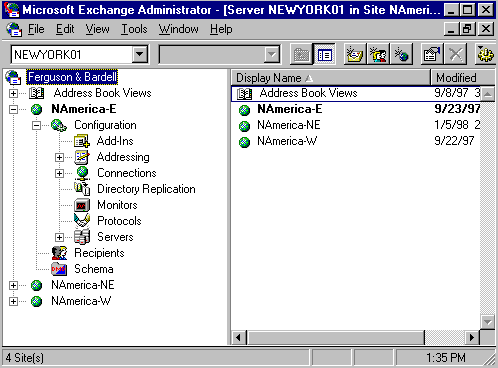 To run the Administrator program in raw mode
To run the Administrator program in raw mode
The directory consists of two main components: The directory database and directory service. The directory database is responsible for storing all information about an organization's resources and users, such as mailboxes, servers, and connectors. It stores this data in the directory tree. The directory service manages information in the directory database and handles requests from users, services, and applications. In addition, the directory service is responsible for providing the Address Book, enforcing the rules governing the structure and content of the directory, and sending directory replication notifications to other servers.
The directory is based on a hierarchical tree with the organization at the root of the tree. The Microsoft Exchange Server Administrator program in raw mode allows the directory hierarchy tree to be viewed without any virtual directories or containers generated by other Microsoft Exchange Server services (such as the Global Address List and Public Folder containers).
To access the raw properties of directory objects in the Administrator program, you can run the Administrator program in raw mode. Note that you can also view the Schema container in raw mode, even though that container view is not available in the normal Administrator program view.
Caution Making changes to the directory in raw mode can result in loss of functionality and data loss. Extreme caution should be taken when running the Administrator program in raw mode. You should not make changes to the directory unless directed to do so by a Knowledge Base article or a Microsoft Support Engineer.
 To run the Administrator program in raw mode
To run the Administrator program in raw mode
